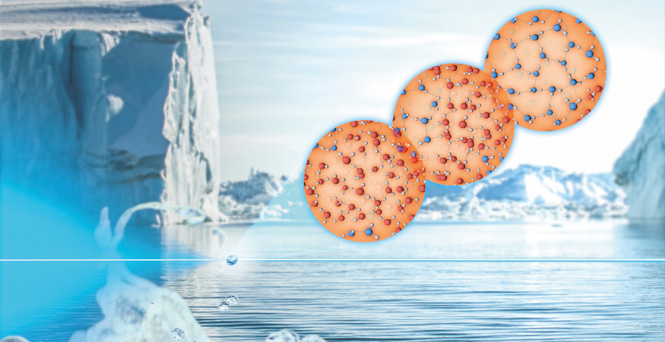URL: https://v1.desy.de/site_www-desy/content/petra4/research_topics/earth_and_environment/index_eng.html
Breadcrumb Navigation
Protect the earth and its resources

Protect and understand
Water: Key element for life and technnology
In Earth and environmental research, scientists investigate the fundamental functions of the Earth system and the interactions between humans and nature. In doing so, they create a knowledge base to secure the fundamentals of life in the long term. The 3D X-ray microscope PETRA IV will significantly sharpen the view of essential aspects of our environment. The facility will allow researchers to study matter under extreme conditions and at interfaces, and in particular to decode the unique properties of water.
»Water is not yet understood in detail. PETRA IV's revolutionary capabilities enable water to be studied at unprecedented resolution to understand biological and chemical processes.«
Water research for people, technology and environment
Water research builds the basis for new insights and innovations - in health research, for new forms of energy and for sustainable resource management. Water is the basis of all life. Biological processes cannot function without water. In the cells of living organisms, proteins work tirelessly in an environment of water. In oceans, rivers and glaciers, water shapes our planet and its climate - and water is essential for current and future technologies.
Nevertheless, many extraordinary properties of this unique substance are still not understood in detail. To understand them, researchers need to decipher the complex interplay of water molecules. The technical progress of PETRA IV enables analyses of the structure and dynamics of water in the necessary detail. From this, essential insights for natural and life sciences, technology and health can be derived.
In diseases such as Alzheimer's, for example, physicians observe disruptive protein plaques in the human brain: proteins that have clumped together in their aqueous solution in the cell and no longer dissolve. In order to be able to specifically influence this process, researchers need to better understand the interplay between the water molecules and the proteins. At PETRA IV, they will be able to follow the individual movements of the proteins in the cell, which are only a few nanometers in size, live in the future. The X-ray light from PETRA IV can be dosed so precisely that biological samples do not suffer any radiation damage during the measurement.
Water is also the source of a large number of technological innovations. Hydrogen, for example, has great potential as an energy carrier and can in principle be obtained directly from water and sunlight with the aid of a suitable catalyst. However, this photocatalytic water splitting has not yet been feasible on a large scale. With PETRA IV, water splitting can be monitored directly in the vicinity of a catalyst particle on the nanoscale. By understanding the processes involved, tailor-made catalysts can be developed.
Researching water in an interdisciplinary way
n order to bundle the work of research groups from all over Europe in water research, the Centre for Molecular Water Science, CMWS is being built in Hamburg's planned Science City Bahrenfeld.
Researchers from the European XFEL, the University of Hamburg, DESY and other partners will work together there. Their goal: to unravel the structure of water in order to understand artificial photosynthesis, the density anomaly of water or the biochemistry of proteins dissolved in water. The center will promote and facilitate exchange with neighboring disciplines such as chemistry and biochemistry, geosciences, astrophysics, or nanotechnology. The CMWS will also support users in the complex preparation of their experiments.
- PETRA IV will track the dynamics of complex molecular networks such as aqueous solutions down to the nanosecond, hundreds to tens of thousands of times faster than today's facilities - at maximum spatial resolution
- This enables fundamentally new insights into how the macroscopic behavior of complex systems is determined by their molecular properties. Research and technology benefit from this.
- PETRA IV and the X-ray laser European XFEL complement each other ideally. Together, they open up time scales from the femtosecond range to seconds, minutes or hours.


